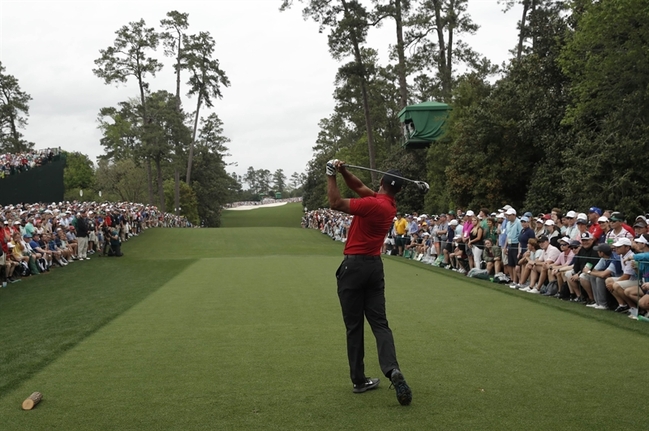You are viewing 1 of your 1 free articles
The modern golfer part II: be strong, perform well
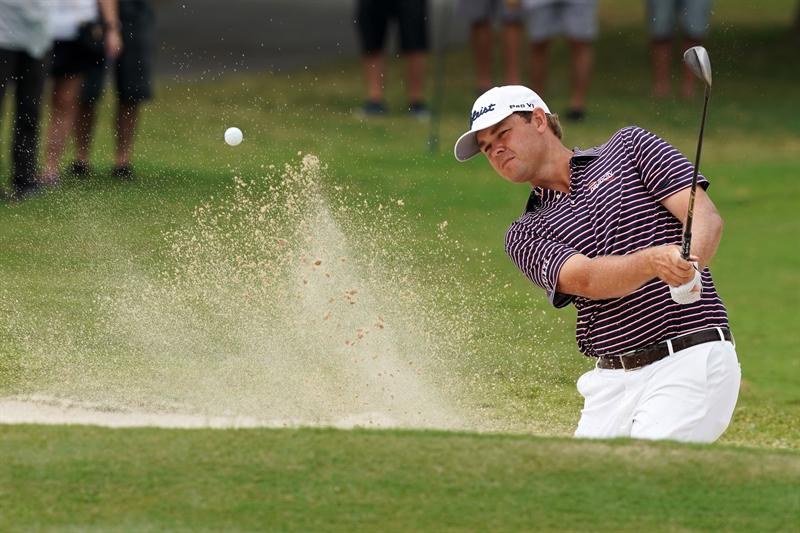
Simple physics tells us that by generating more force against the ground (vertical ground reaction force), we can increase velocity. This applies directly to the golf swing, which relies on a kinetic chain (as described in part one– and see figure 1 below) to generate maximal club-head velocity (CHV) at impact. Therefore, the ability of the golfer to generate peak force with the lower body appears to be a key factor for generating greater club-head speed(1)and therefore driving distance(2). Maximal strength training (which increases force over slower velocities) has been shown to be more beneficial in creating peak CHV as opposed to plyometric activities(1). This training mode should therefore be used when designing a strength and conditioning (S&C) training program for golfers.
Figure 1: Rotational speed in the kinetic chain from address to impact
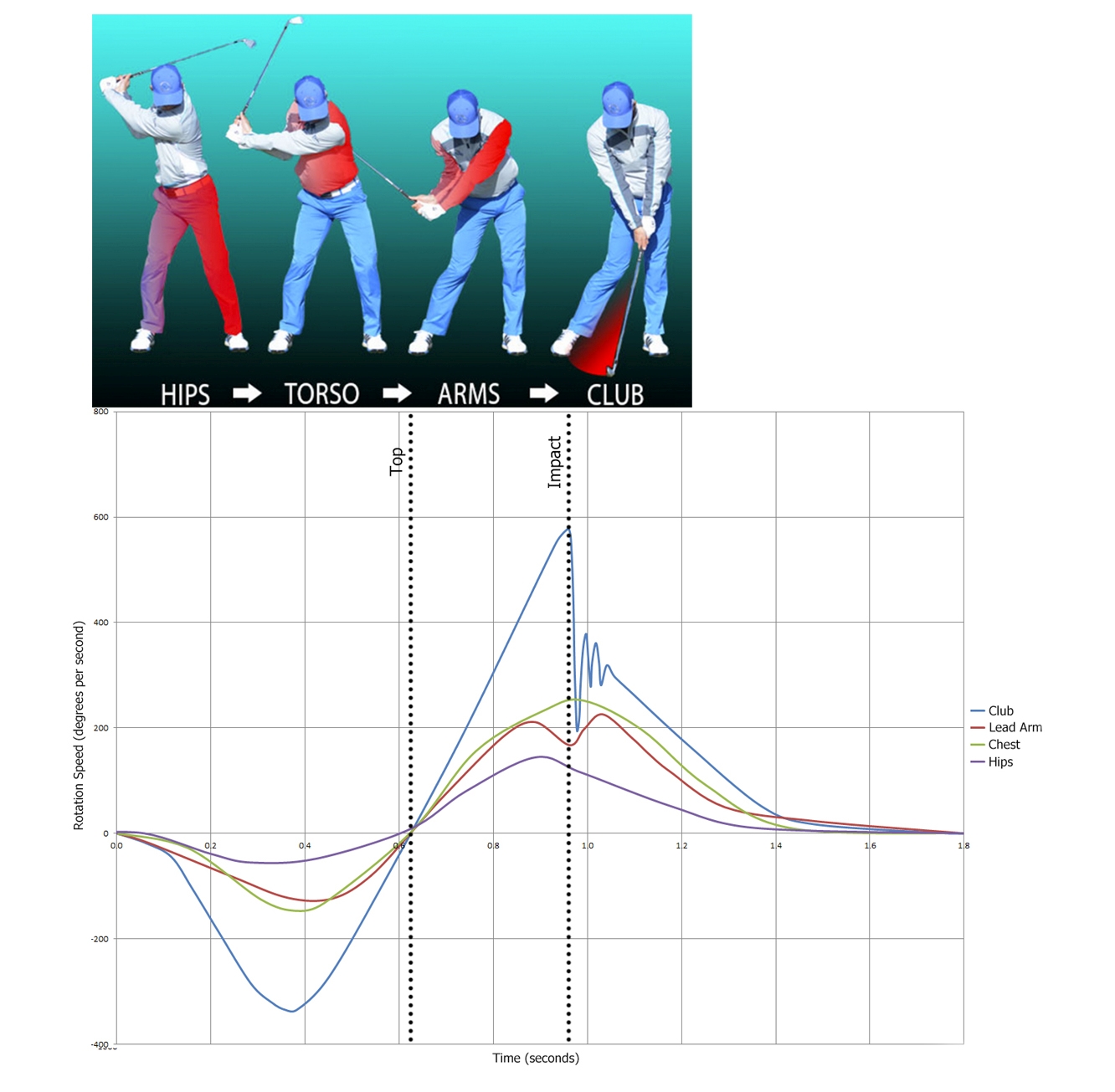
Interestingly and more specifically, lower-handicap golfers have been shown to elicit better results in hip, trunk and shoulder isokinetic strength testing, with improved correlations between swing speed and hip muscle power, as well as trunk power with greater driving distances(3). In one study, golfers participated in an 8-week programme focusing on training hip abduction strength, torso rotational strength, hip flexion/extension mobility, and torso rotational mobility. This training created significant improvements in club head velocity (5.2%), ball velocity (5%), carry distance (7.7%), and total driving distance (6.8%)(4).
When considering the specifics of strength training, upper limb strength and muscle hypertrophy gains occur with a high-intensity (ie 90% of 1 repetition-maximal [RM] effort), low-volume(four sets of 3-5 repetitions) resistance training program utilising a long rest intervals between sets (of around 3minutes)(5). Interestingly, the lower limb has shown to be more resistant to exercise-induced muscle damage and slower to respond to training. Thus, a longer period of lower-limb training seems to be required to produce the same effects as in the upper limbs(5,6). Developing increased cross-sectional muscle area (ie girth) tends to take longer; strength gains with short-duration training are therefore more attributable to neural adaptations, principally increased motor unit recruitment and firing pattern activity(6).
Additionally, it is thought that multi-joint training exercises generate greater morphological changes by stimulating greater adaptation across a larger percentage of muscle fibers(5,7,8). This makes sense considering the involvement of large trunk and lower limb muscle combinations during the golf swing (see below)(9). More specifically, hip and knee extension strength should be targeted as there is a correlation between lower body leg extensor strength and club-head speed(1). This should be factored in when designing a program for a golfer.
Cardiorespiratory fitness has an impact on a golfer’s robustness, especially when considering fatigue accumulation on a round of golf. There are also correlations with aerobic conditioning and improvements in chip shot efficacy and putting average(3). This is likely due to increased concentration levels, which creates enhanced decision making and mental alertness(6).
Strength training for golfers (with help from S&C coach, Stephen Dalton at Pure Sports Medicine, London)
Start with the dynamic warm-up described in part 1 of this series. Dynamic warm-ups benefit performance by raising the heart rate, increasing blood flow to tissues to facilitate nerve transmission, and motor unit recruitment(8). These effects occur by stiffening the muscle-tendon units (MTU), improving force output and enhancing neuromuscular responses such as synchronisation and more efficient muscle recruitment patterns(8). Passive stretching before performance, on the other hand, has negative effects, being linked with an immediate reduction in isometric strength, a less complaint MTU, decreased neuromuscular reflex sensitivity, and neural inhibition(8).Hip extension strengthening program
The deadlift
The deadlift is a compound exercise using several large muscle groups with a large aspect of hip extension, which makes it ideal for golfers. Prime movers and synergistic muscles of the abdomen, lower body, lower back and upper back are highly utilised, and there is a large emphasis on fundamental motor control(9). There are many variations on the deadlift. Below is an example of the Romanian deadlift, which puts more emphasis on the hamstrings and gluteals(9).
Romanian deadlift
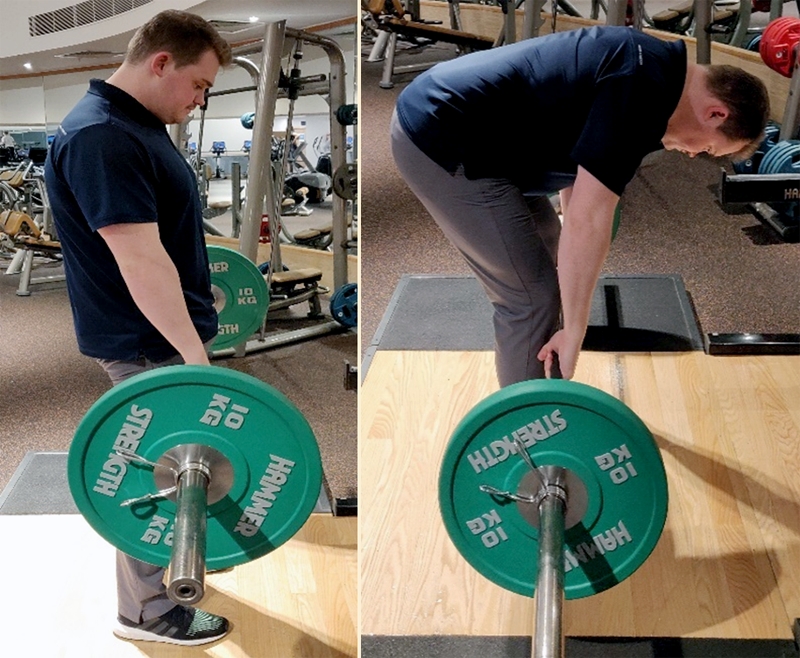
Throughout, keep the spine neutral and the abdominals engaged, with scapulars retracted. Let the weight descend below knee level by hinging from the hips whilst keeping a slight bend in the knees. When the stretch on the hamstrings is felt, the bar should be somewhere between the knees and middle of the shin. Then extend the hips again and return the bar to the start position. Arms should remain straight throughout, and shoulders and chest should remain ahead of the bar. 3-5reps, four sets at 90% 1RM. minutes rest between sets.
Trap bar deadlift
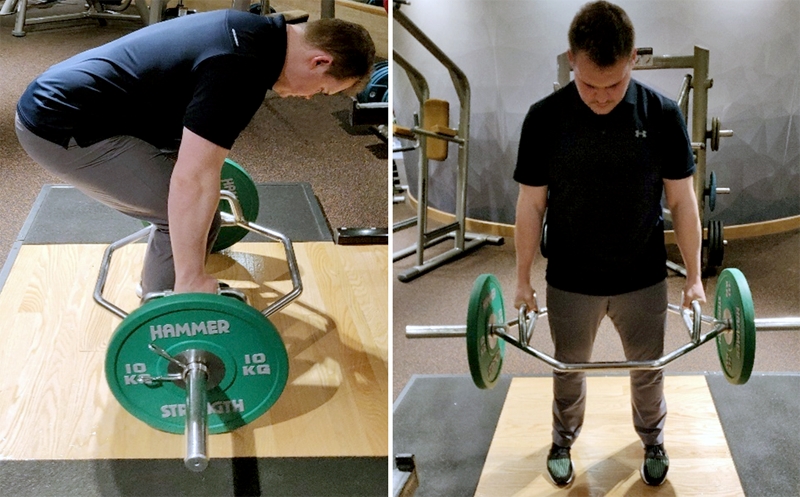
Although using a barbell moves the body in the same sagittal plane as the golf swing, some may prefer the hex bar or trap bar deadlift from a technique point-of-view. However, there is some evidence that suggests greater bicep femoris and gluteus maximus EMG activation with the barbell deadlift(10).
The barbell hip thrust
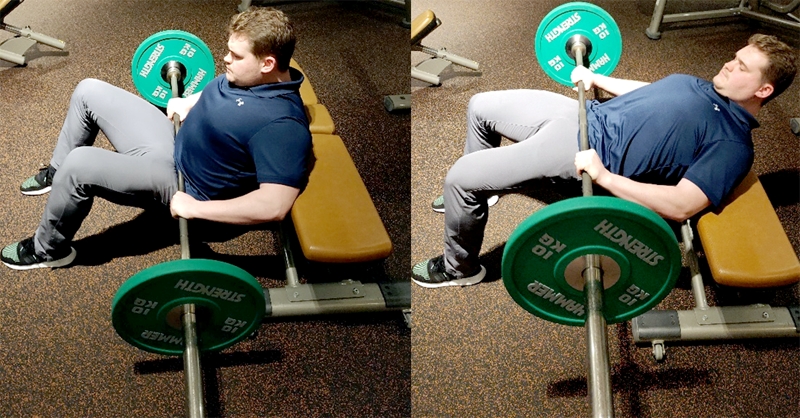
The barbell hip thrust has been shown to induce higher EMG activity in the gluteus maximus than the hex bar deadlift, particularly during the upper phase of the movement. However, there is no significance difference in activation compared to the barbell deadlift(10).
Start in a seated position on the ground, with the upper back leaning on a bench. The barbell should be placed at the crease of the hips, slightly above the pelvis. Keeping a neutral spine, thrust the barbell up until the hips are fully extended. The knees should be at approximately 90˚once at full hip extension is achieved. Perform three to five reps, four sets at 90% 1RM. Three minutes rest in between sets.
Trunk resistance training
The abdominals and obliques generate a large proportion of rotational acceleration in the downswing and recoil in the backswing. They also play a large deceleration role in the follow through. During skilled athletic performance, spinal function has been defined into 4 distinct categories – mobility (see part 1), motor control, work capacity (or local muscular endurance), and strength(11). Training should therefore reflect this.
Standing cable rotation
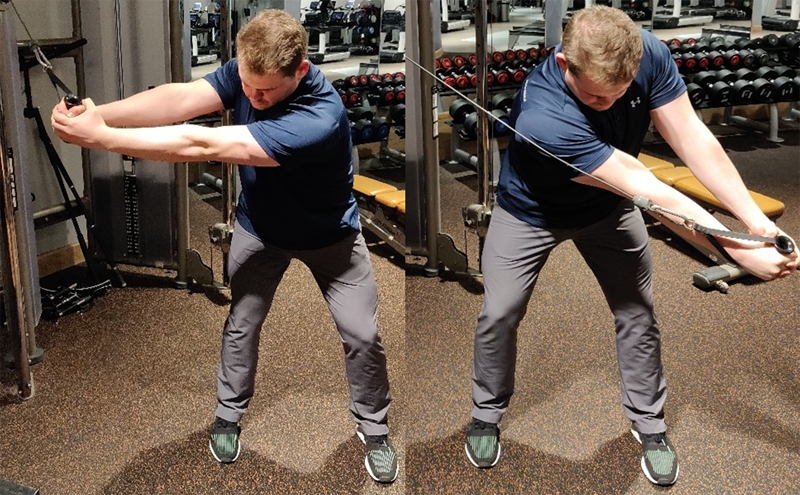
This is a segmental motor control and work capacity exercise, aiming to develop rotational forces. It can be varied with posture and cable height, either standing/ kneeling or half kneeling, or from a down-up/up-down motion.
In a golf posture, have both hands clutching the weighted cable. From a high to low position, rotate hands in line with chest and keeping arms straight. Perform six to eight reps, and three sets using a fatiguing weight.
Half kneeling Pallof press
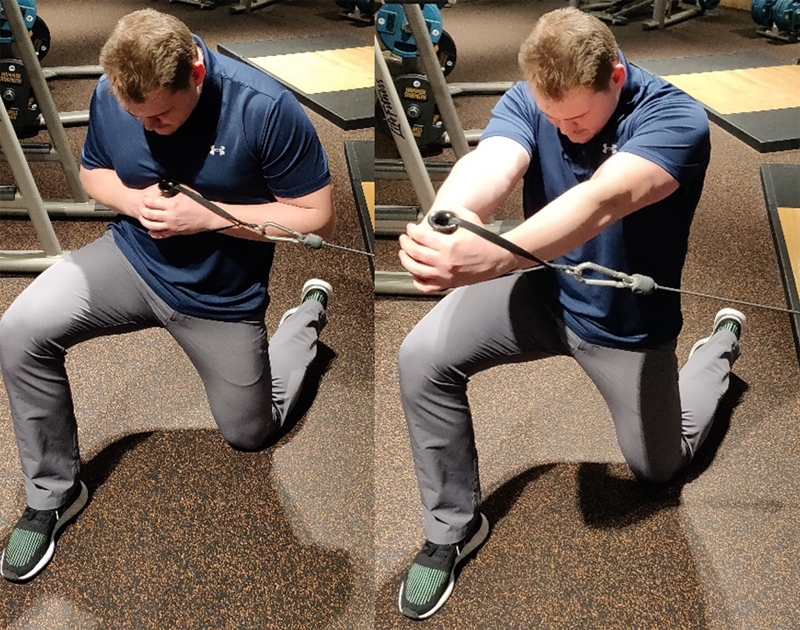
This is a pillar conditioning work-capacity exercise, with anti-rotation force production to develop stiffness and robustness of the trunk. Improving trunk stiffness is helpful to create a platform needed for power production(11). This is particularly apt considering the repetition and velocity demands of a golf swing.
Posture and direction of the cable can again be varied. In a half kneeling position, have both hands clutching the cable with resistance from either side. Maintaining a neutral pelvis, push the cable away from you, and then towards you again. Perform 6-8 reps, 3 sets, using a fatiguing weight.
Dead bug
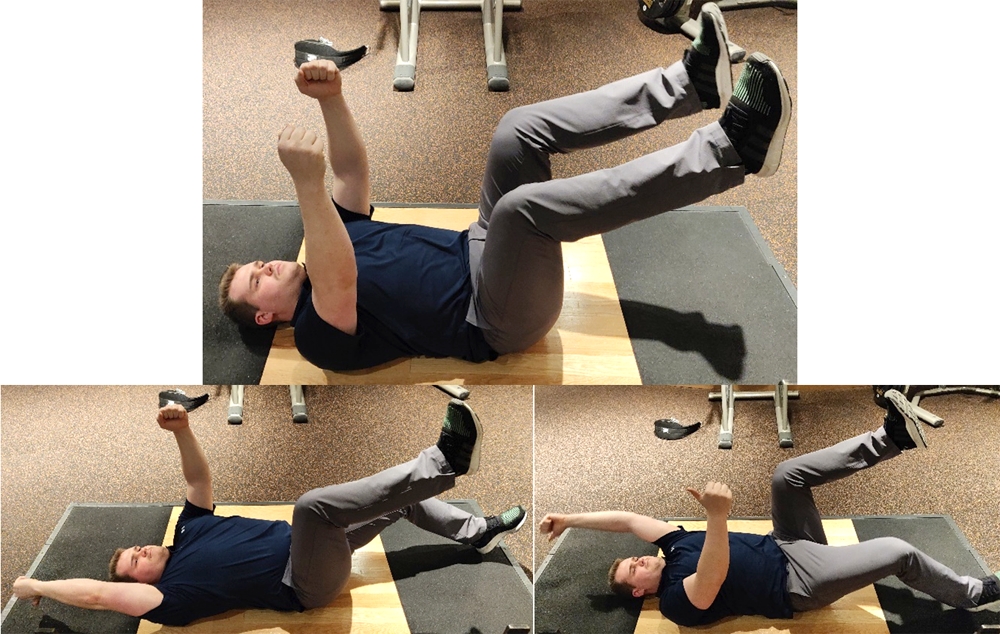
This is an exercise promoting motor control development and spinal dissociation. It’s great for anti-extension development and pelvic control, as well as trunk stiffness – all of which are important for developing a robust golf swing.
Lying supine with the lumbar spine in neutral, lift both knees and hips to 90˚. Whilst maintaining the pelvic position, lower one leg and the opposite arm. Come back to the start position and repeat using the opposite combination. This exercise can be made harder by keeping the knee straight and using a longer lever, or by adding extra resistance from a cable held in one hand. Perform three sets, or until fatigue and loss of the correct pelvic position.
References
- Wells, J.E.T. et al. (2018). J Sports Sci. 1-5
- Torres-Rhonda, L. et al. (2011). J Sports Sci and Med. 10: 9-18
- Wells, G.D. et al. (2009). J Strength and Conditioning Research. 23(3): 741-750
- Lephart, S.M. et al. (2007). J Strength and Conditioning Research. 21(3): 860-869
- Mangine, G.T. et al. (2015). Physiol Rep. 3(8): 1-17
- Smith, C.J. et al. (2011). J Sports Sci. 1-11
- Meira, E.P. & Brumitt, J. (2010). Sports Phys Ther. 2(4): 337-344
- Tilley, N.R. & Macfarlane, A. (2012). Int J Sports Phys Ther. 7(4): 388-395
- Escamilla, R. et al. (2000). Sci Sports and Ex. 32: 1265-1275
- Andersen, V. et al. (2018). J Strength and Conditioning Research. 32(3): 587-593
- Spencer S. et al. (2016). J Athletic Training. 51(8): 613-628
Newsletter Sign Up
Subscriber Testimonials
Dr. Alexandra Fandetti-Robin, Back & Body Chiropractic
Elspeth Cowell MSCh DpodM SRCh HCPC reg
William Hunter, Nuffield Health
Newsletter Sign Up
Coaches Testimonials
Dr. Alexandra Fandetti-Robin, Back & Body Chiropractic
Elspeth Cowell MSCh DpodM SRCh HCPC reg
William Hunter, Nuffield Health
Be at the leading edge of sports injury management
Our international team of qualified experts (see above) spend hours poring over scores of technical journals and medical papers that even the most interested professionals don't have time to read.
For 17 years, we've helped hard-working physiotherapists and sports professionals like you, overwhelmed by the vast amount of new research, bring science to their treatment. Sports Injury Bulletin is the ideal resource for practitioners too busy to cull through all the monthly journals to find meaningful and applicable studies.
*includes 3 coaching manuals
Get Inspired
All the latest techniques and approaches
Sports Injury Bulletin brings together a worldwide panel of experts – including physiotherapists, doctors, researchers and sports scientists. Together we deliver everything you need to help your clients avoid – or recover as quickly as possible from – injuries.
We strip away the scientific jargon and deliver you easy-to-follow training exercises, nutrition tips, psychological strategies and recovery programmes and exercises in plain English.
